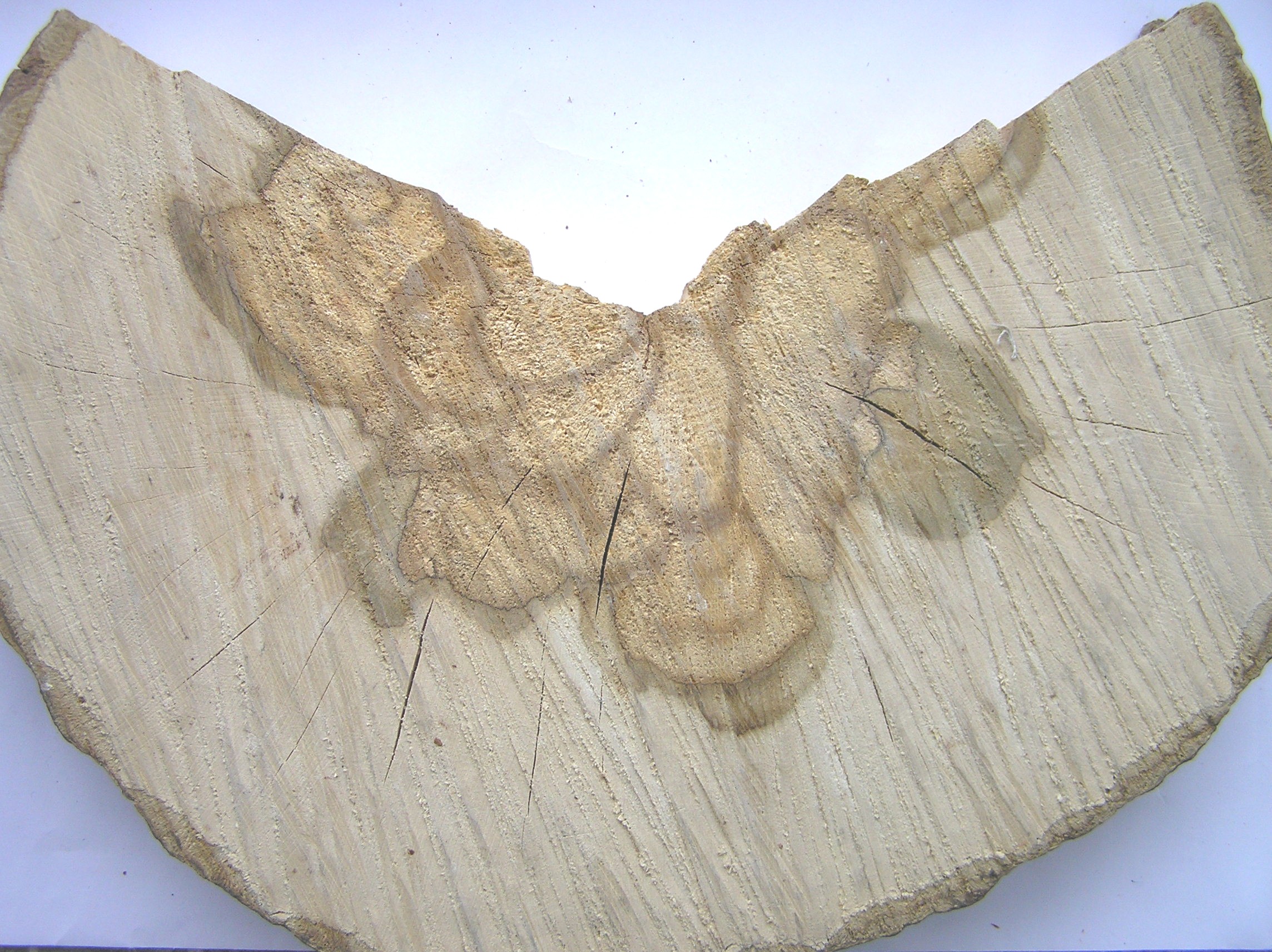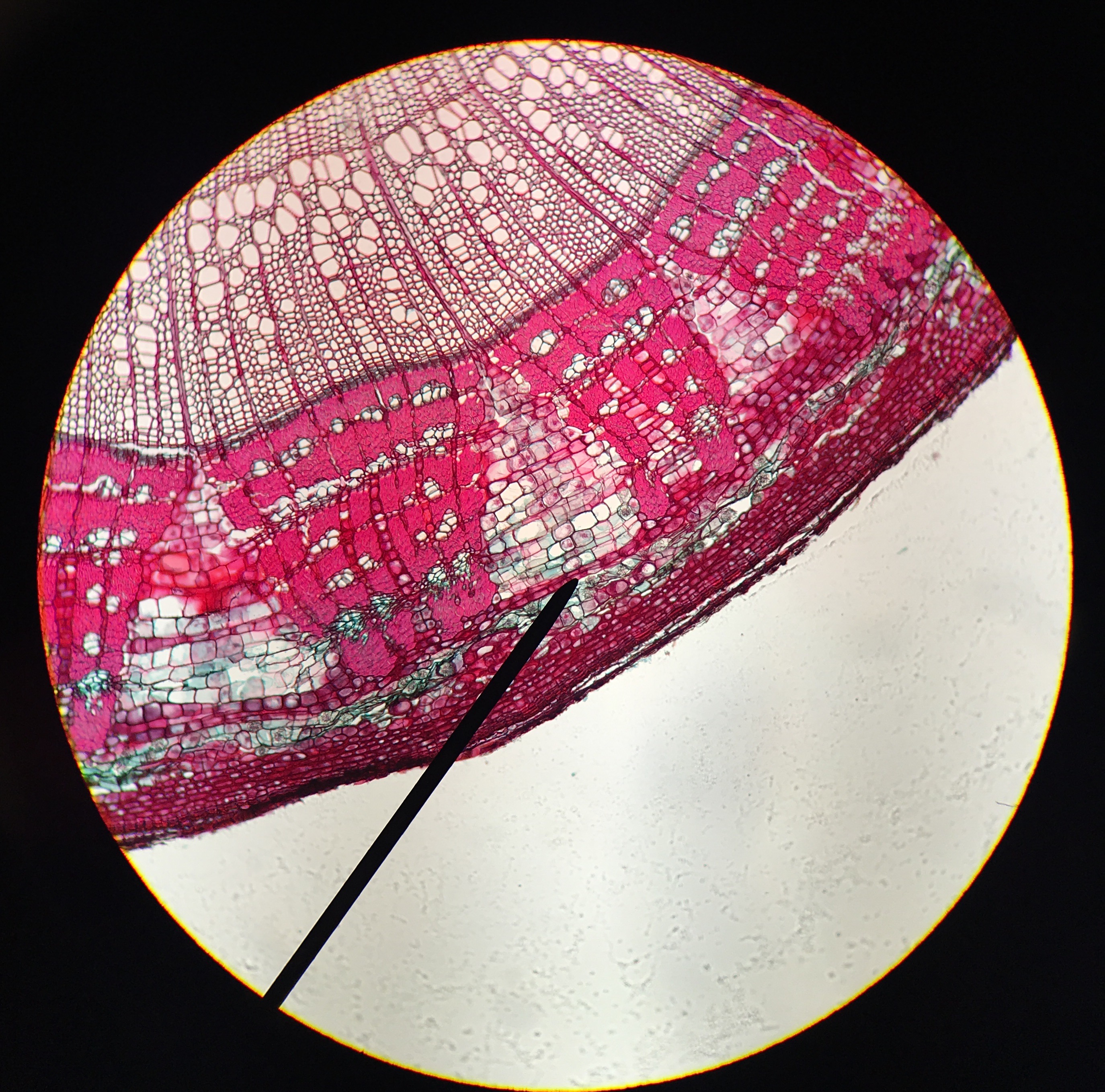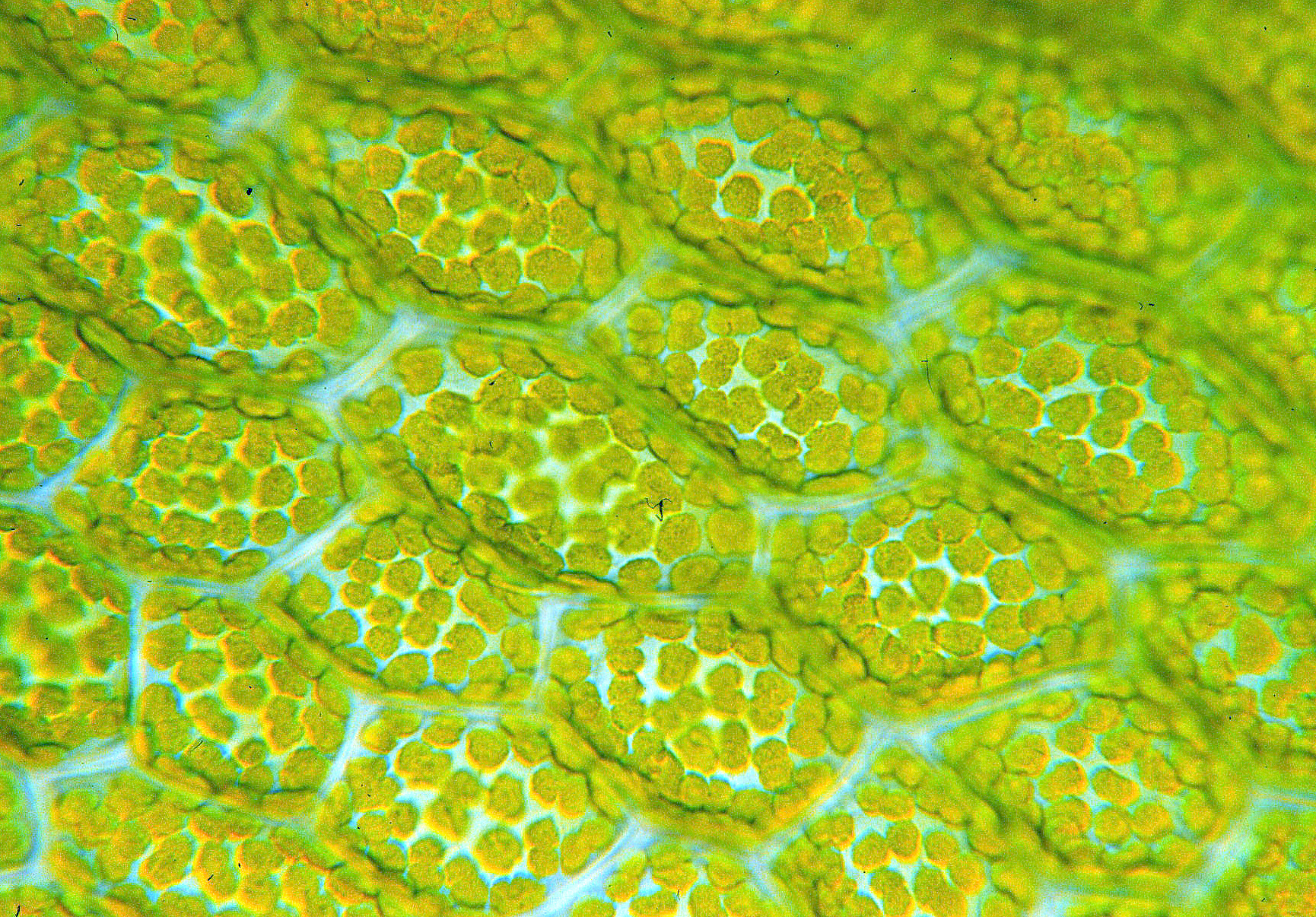|
Tylosis (botany)
In woody plants, a tylosis (plural: tyloses) is a bladder-like distension of a parenchyma cell into the lumen of adjacent vessels. The term tylosis summarises the physiological process and the resulting occlusion in the xylem of woody plants as response to injury or as protection from decay in heartwood. It is a key process in wall one of the compartmentalization of decay in trees (CODIT) and other woody plants. Anatomy Observed in section under a microscope, tyloses appear as balloon-like protrusions emanating from axial paratracheal parenchyma cells into xylem vessels through pits linking the two. In some types, there may be a distinct barrier between the tyloses emanating from the pits into the vessels, while they may be barely distinguishable in other cases. Role in compartmentalization Tylosis in the vessels of flowering plants counteracts the axial spread of fungal hyphae and other pathogens by slowing down their vertical spread with a physical barrier. A similar process o ... [...More Info...] [...Related Items...] OR: [Wikipedia] [Google] [Baidu] |
Ground Tissue
The ground tissue of plants includes all tissues that are neither Epidermis (botany), dermal nor Vascular tissue, vascular. It can be divided into three types based on the nature of the cell walls. # Parenchyma cells have thin primary walls and usually remain alive after they become mature. Parenchyma forms the "filler" tissue in the soft parts of plants, and is usually present in Cortex (botany), cortex, pericycle, pith, and Medullary ray (botany), medullary rays in primary Plant stem, stem and root. # Collenchyma cells have thin primary walls with some areas of secondary thickening. Collenchyma provides extra mechanical and structural support, particularly in regions of new growth. # Sclerenchyma cells have thick Lignin, lignified Secondary cell wall, secondary walls and often die when mature. Sclerenchyma provides the main structural support to a plant. Parenchyma Parenchyma is a versatile ground tissue that generally constitutes the "filler" tissue in soft parts of plants. It ... [...More Info...] [...Related Items...] OR: [Wikipedia] [Google] [Baidu] |
Cambium (botany)
A cambium (plural cambia or cambiums), in plants, is a tissue layer that provides partially undifferentiated cells for plant growth. It is found in the area between xylem and phloem. A cambium can also be defined as a cellular plant tissue from which phloem, xylem, or cork grows by division, resulting (in woody plants) in secondary thickening. It forms parallel rows of cells, which result in secondary tissues. There are several distinct kinds of cambium found in plant stems and roots: * Cork cambium, a tissue found in many vascular plants as part of the periderm. * Unifacial cambium, which ultimately produces cells to the interior of its cylinder. * Vascular cambium, a lateral meristem in the vascular tissue of plants. Uses The cambium of many species of woody plants are edible; however, due to its vital role in the homeostasis and growth of woody plants, this may result in death of the plant if enough cambium is removed at once. The cambium can generally be eaten raw or cooke ... [...More Info...] [...Related Items...] OR: [Wikipedia] [Google] [Baidu] |
Wood
Wood is a porous and fibrous structural tissue found in the stems and roots of trees and other woody plants. It is an organic materiala natural composite of cellulose fibers that are strong in tension and embedded in a matrix of lignin that resists compression. Wood is sometimes defined as only the secondary xylem in the stems of trees, or it is defined more broadly to include the same type of tissue elsewhere such as in the roots of trees or shrubs. In a living tree it performs a support function, enabling woody plants to grow large or to stand up by themselves. It also conveys water and nutrients between the leaves, other growing tissues, and the roots. Wood may also refer to other plant materials with comparable properties, and to material engineered from wood, or woodchips or fiber. Wood has been used for thousands of years for fuel, as a construction material, for making tools and weapons, furniture and paper. More recently it emerged as a feedstock for the productio ... [...More Info...] [...Related Items...] OR: [Wikipedia] [Google] [Baidu] |
Plant Anatomy
Plant anatomy or phytotomy is the general term for the study of the internal structure of plants. Originally it included plant morphology, the description of the physical form and external structure of plants, but since the mid-20th century plant anatomy has been considered a separate field referring only to internal plant structure. Plant anatomy is now frequently investigated at the cellular level, and often involves the sectioning of tissues and microscopy. Structural divisions Some studies of plant anatomy use a systems approach, organized on the basis of the plant's activities, such as nutrient transport, flowering, pollination, embryogenesis or seed development. Others are more classically divided into the following structural categories: : Flower anatomy, including study of the Calyx, Corolla, Androecium, and Gynoecium : Leaf anatomy, including study of the Epidermis, stomata and Palisade cells : Stem anatomy, including Stem structure and vascular tissues, buds ... [...More Info...] [...Related Items...] OR: [Wikipedia] [Google] [Baidu] |
Medullary Ray (botany)
Medullary rays are cellular structures found in some species of wood. They appear as radial planar structures, perpendicular to the growth rings, which are visible to the naked eye. In a transverse section they appear as radiating lines from the centre of the log. In an axial section they may appear as a variety of transverse markings, depending on how close the section is to the plane of the ray. In a tangential section they may be hard to see at all. They are formed by the activity of fascicular cambium. During the process of the division of cambium, the cambium cuts out cells on both the outer and inner side. These cells are parenchymatous. Most of these cells transform into xylem and phloem. But certain cells don't transform into xylem and phloem and remain as such. These cells cut out by the cambium towards the periphery are phloem parenchyma while those towards the pith are xylem parenchyma. Both of these cells together work as secondary medullary rays. These medullary or p ... [...More Info...] [...Related Items...] OR: [Wikipedia] [Google] [Baidu] |
Terpene
Terpenes () are a class of natural products consisting of compounds with the formula (C5H8)n for n > 1. Comprising more than 30,000 compounds, these unsaturated hydrocarbons are produced predominantly by plants, particularly conifers. Terpenes are further classified by the number of carbons: monoterpenes (C10), sesquiterpenes (C15), diterpenes (C20), as examples. The terpene alpha-pinene, is a major component of the common solvent, turpentine. History and terminology The term ''terpene'' was coined in 1866 by the German chemist August Kekulé to denote all hydrocarbons having the empirical formula C10H16, of which camphene was one. Previously, many hydrocarbons having the empirical formula C10H16 had been called "camphene", but many other hydrocarbons of the same composition had had different names. Kekulé coined the term "terpene" in order to reduce the confusion. The name "terpene" is a shortened form of "terpentine", an obsolete spelling of "turpentine". Although sometimes ... [...More Info...] [...Related Items...] OR: [Wikipedia] [Google] [Baidu] |
Volatile Organic Compound
Volatile organic compounds (VOCs) are organic compounds that have a high vapour pressure at room temperature. High vapor pressure correlates with a low boiling point, which relates to the number of the sample's molecules in the surrounding air, a trait known as volatility. VOCs are responsible for the odor of scents and perfumes as well as pollutants. VOCs play an important role in communication between animals and plants, e.g. attractants for pollinators, protection from predation, and even inter-plant interactions. Some VOCs are dangerous to human health or cause harm to the environment. Anthropogenic VOCs are regulated by law, especially indoors, where concentrations are the highest. Most VOCs are not acutely toxic, but may have long-term chronic health effects. Definitions Diverse definitions of the term VOC are in use. Canada Health Canada classifies VOCs as organic compounds that have boiling points roughly in the range of . The emphasis is placed on commonly encountere ... [...More Info...] [...Related Items...] OR: [Wikipedia] [Google] [Baidu] |
Resin
In polymer chemistry and materials science, resin is a solid or highly viscous substance of plant or synthetic origin that is typically convertible into polymers. Resins are usually mixtures of organic compounds. This article focuses on naturally occurring resins. Plants secrete resins for their protective benefits in response to injury. The resin protects the plant from insects and pathogens. Resins confound a wide range of herbivores, insects, and pathogens, while the volatile phenolic compounds may attract benefactors such as parasitoids or predators of the herbivores that attack the plant. Composition Most plant resins are composed of terpenes. Specific components are alpha-pinene, beta-pinene, delta-3 carene, and sabinene, the monocyclic terpenes limonene and terpinolene, and smaller amounts of the tricyclic sesquiterpenes, longifolene, caryophyllene, and delta-cadinene. Some resins also contain a high proportion of resin acids. Rosins on the other hand are less ... [...More Info...] [...Related Items...] OR: [Wikipedia] [Google] [Baidu] |
Dendrochronology
Dendrochronology (or tree-ring dating) is the scientific method of dating tree rings (also called growth rings) to the exact year they were formed. As well as dating them, this can give data for dendroclimatology, the study of climate and atmospheric conditions during different periods in history from wood. Dendrochronology derives from Ancient Greek (), meaning "tree", (), meaning "time", and (), "the study of". Dendrochronology is useful for determining the precise age of samples, especially those that are too recent for radiocarbon dating, which always produces a range rather than an exact date. However, for a precise date of the death of the tree a full sample to the edge is needed, which most trimmed timber will not provide. It also gives data on the timing of events and rates of change in the environment (most prominently climate) and also in wood found in archaeology or works of art and architecture, such as old panel paintings. It is also used as a check in radiocar ... [...More Info...] [...Related Items...] OR: [Wikipedia] [Google] [Baidu] |
Xylem
Xylem is one of the two types of transport tissue in vascular plants, the other being phloem. The basic function of xylem is to transport water from roots to stems and leaves, but it also transports nutrients. The word ''xylem'' is derived from the Ancient Greek word (''xylon''), meaning "wood"; the best-known xylem tissue is wood, though it is found throughout a plant. The term was introduced by Carl Nägeli in 1858. Structure The most distinctive xylem cells are the long tracheary elements that transport water. Tracheids and vessel elements are distinguished by their shape; vessel elements are shorter, and are connected together into long tubes that are called ''vessels''. Xylem also contains two other type of cells: parenchyma and fibers. Xylem can be found: * in vascular bundles, present in non-woody plants and non-woody parts of woody plants * in secondary xylem, laid down by a meristem called the vascular cambium in woody plants * as part of a stelar arrangement n ... [...More Info...] [...Related Items...] OR: [Wikipedia] [Google] [Baidu] |
Tracheid
A tracheid is a long and tapered lignified cell in the xylem of vascular plants. It is a type of conductive cell called a tracheary element. Angiosperms use another type of tracheary element, called vessel elements, to transport water through the xylem. The main functions of tracheid cells are to transport water and inorganic salts, and to provide structural support for trees. There are often pits on the cell walls of tracheids, which allows for water flow between cells. Tracheids are dead at functional maturity and do not have a protoplast. The wood (softwood) of gymnosperms such as pines and other conifers is mainly composed of tracheids. Tracheids are also the main conductive cells in the primary xylem of ferns. The tracheid was first named after the German botanist Carl Gustav Sanio in 1863, from the German ''Tracheide''. Evolution Tracheids were the main conductive cells found in early vascular plants. In the first 140-150 million years of vascular plant evolution, tr ... [...More Info...] [...Related Items...] OR: [Wikipedia] [Google] [Baidu] |
Gymnosperm
The gymnosperms ( lit. revealed seeds) are a group of seed-producing plants that includes conifers, cycads, ''Ginkgo'', and gnetophytes, forming the clade Gymnospermae. The term ''gymnosperm'' comes from the composite word in el, γυμνόσπερμος ( el, γυμνός, translit=gymnos, lit=naked, label=none and el, σπέρμα, translit=sperma, lit=seed, label=none), literally meaning 'naked seeds'. The name is based on the unenclosed condition of their seeds (called ovules in their unfertilized state). The non-encased condition of their seeds contrasts with the seeds and ovules of flowering plants (angiosperms), which are enclosed within an ovary. Gymnosperm seeds develop either on the surface of scales or leaves, which are often modified to form cones, or solitary as in yew, ''Torreya'', ''Ginkgo''. Gymnosperm lifecycles involve alternation of generations. They have a dominant diploid sporophyte phase and a reduced haploid gametophyte phase which is dependent on ... [...More Info...] [...Related Items...] OR: [Wikipedia] [Google] [Baidu] |






.jpg)

.png)
